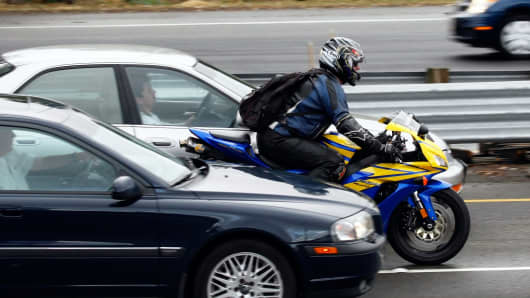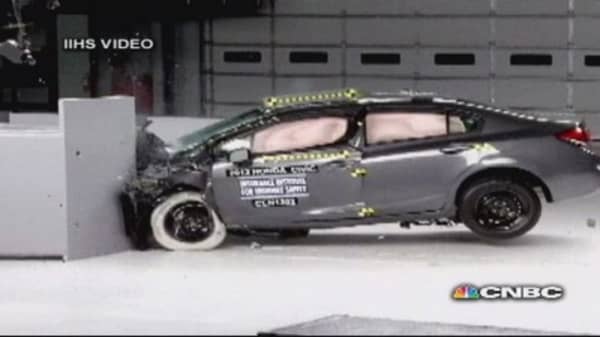In a demonstration on the roof of Detroit's sprawling MGM Grand Casino, Honda showed off the two prototype systems by having a motorcycle scoot across an "intersection' initially hidden from view behind a truck. The driver of a Honda Accord was alerted to the danger by a sound and a flashing light on a video display mounted on the dashboard. A similar test revealed a pedestrian stepping out into "traffic" from behind a van.
(Read more: Honda Odyssey sets new standard for minivan safety)
Without the added warning, the Accord driver might have hit both the pedestrian and the motorcyclist. Instead, he had enough time to bring the sedan safely to a stop.
Other automakers also are looking for ways to reduce the number of accidents and in particular to spot pedestrians stepping into traffic. Volvo's City Safety technology has won kudos, as well as discounts from insurers that find it effective at reducing car-to-car and car-to-pedestrian collisions.
(More from The Detroit Bureau: Nissan Plans Huge Boost in US Production, Exports)
But systems based on cameras or radar, sonar or laser sensors usually can't do much behind the line of sight, and generally offer a warning of no more than about three seconds. Honda's vehicle-to-pedestrian and vehicle-to-motorcycle technologies can boost that to as much as 10 seconds and spot potential collisions.
The trick is a wireless communications system similar to Wi-Fi. If it proves effective—and if Honda, its competitors and regulators can agree on standards—a small chip would be embedded in future cellphones and motorcycles. In a phone, a low-power signal would indicate if a pedestrian is about to walk into the street; in a motorcycle, it would indicate the bike's path.
A wireless receiver in a car would continually watch for potential collisions. Such technology could be linked to the vehicle's brakes and allow the car to come to a stop, if necessary before the driver even recognized the danger.




